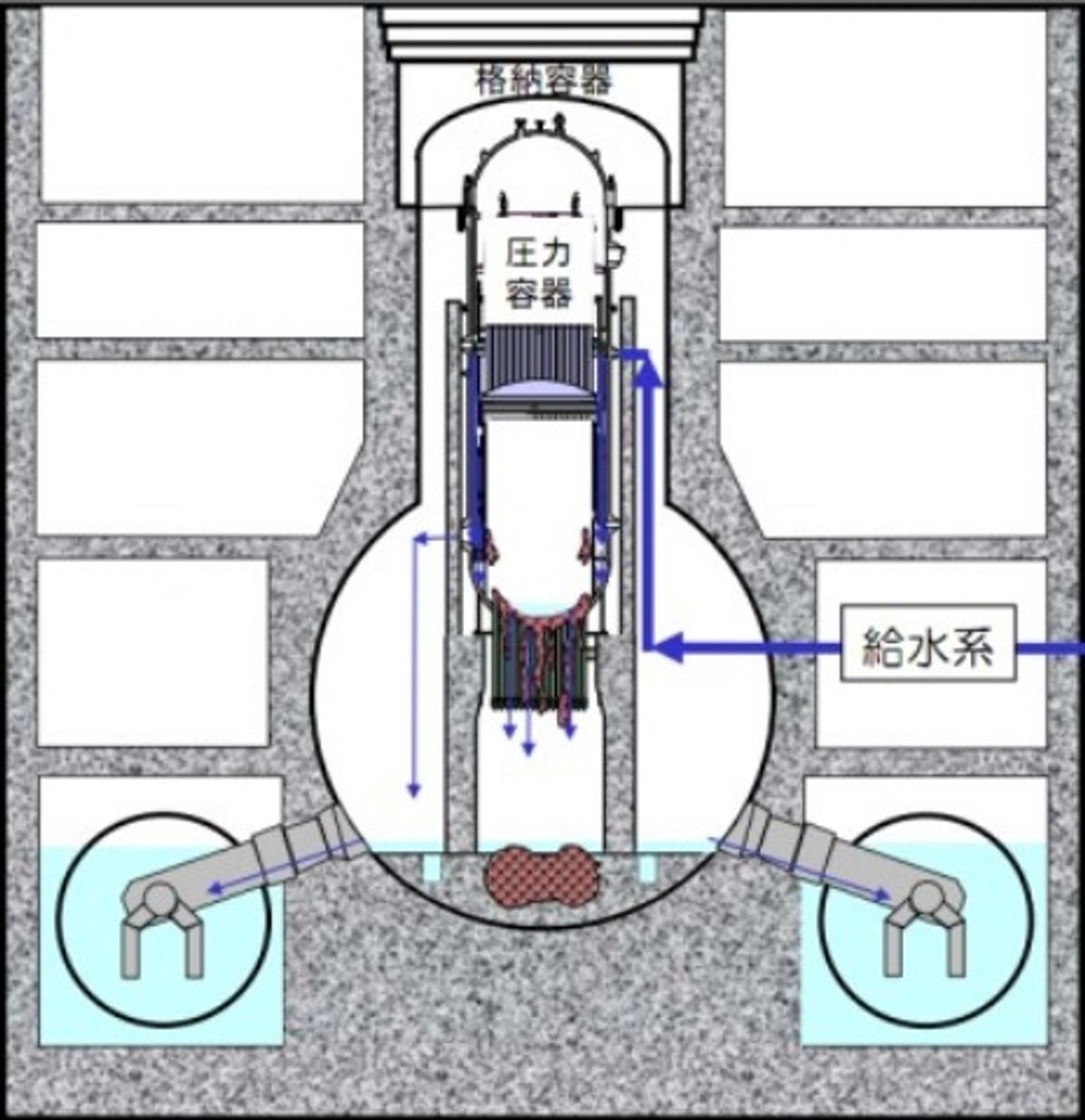Editor's Note: This is part of the IEEE Spectrum special report: Fukushima and the Future of Nuclear Power.
A new simulation of the meltdowns at the Fukushima Dai-ichi nuclear power station found that the situation was even worse than previously thought. It now appears that nearly all the nuclear fuel in reactor 1 melted through the first line of defense, the steel reactor vessel, and made a serious dent in the next protective layer.
(The analysis is only available in Japanese at this time, but we'll update the post when/if it comes out in English. The source of the figures in this post is a brief summary from World Nuclear News.)
TEPCO, the utility that owns the Fukushima plant, ran new calculations of the rate at which the nuclear fuel melted in reactors 1, 2, and 3. These three reactors were in service at the time of the 11 March earthquake and tsunami, and although they automatically shut down following the earthquake, the tsunami knocked out all power at the facility and thus prevented cooling systems from removing the nuclear fuel's residual heat.
As extensively documented in our feature article, "24 Hours at Fukushima," reactor 1 suffered the greatest breakdown. That 40-year-old reactor lost all its emergency cooling systems immediately following the tsunami, while the backup cooling systems at reactors 2 and 3 functioned for a couple of days.
The new analysis from TEPCO suggests that almost all of reactor 1's fuel melted through the steel reactor vessel and dropped down into the primary containment vessel below. (In the image above, the fuel sludge is the brown blob.) The primary containment vessel, a steel structure in the shape of an upside-down light bulb, has concrete at the bottom of the bulb. TEPCO's analysis found that the fuel melted through 70 centimeters of that concrete. However, that still left 190 centimeters of intact concrete between the melted fuel and the steel boundary of the primary containment vessel. In addition, the secondary containment building has 760 centimeters of concrete that stand between the primary containment and the earth below.
At reactors 2 and 3, the simulation found that smaller amounts of fuel melted holes in the pressure vessels and dropped down to the concrete in the primary containment vessel.
It should be noted that this information comes from a computer model of the fuel's behavior, and it may be inaccurate. With the intense levels of radiation around the reactors, there's no way yet to measure the actual location of the fuel.
But it's also worth remembering that TEPCO's earliest announcements about the Fukushima Dai-ichi accident said that there had been no melting of the nuclear fuel. Later they admitted there had been significant melt, but said the fuel had all remained in the reactor vessels. While the company has no doubt been scrambling to get accurate information in an ever-changing and extremely dangerous disaster scene, I'm looking forward to results of the Japanese government's investigation into what TEPCO knew, and when they knew it.
UPDATE: TEPCO has released an English-language summary of its recent analysis (pdf).
Eliza Strickland is a senior editor at IEEE Spectrum, where she covers AI, biomedical engineering, and other topics. She holds a master’s degree in journalism from Columbia University.




